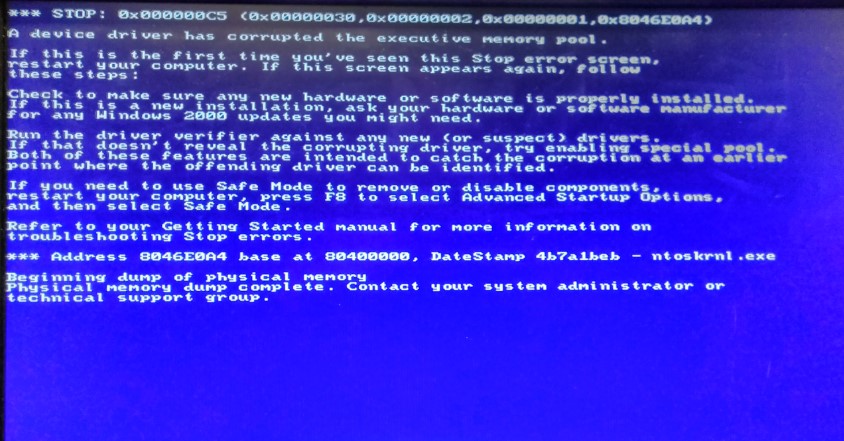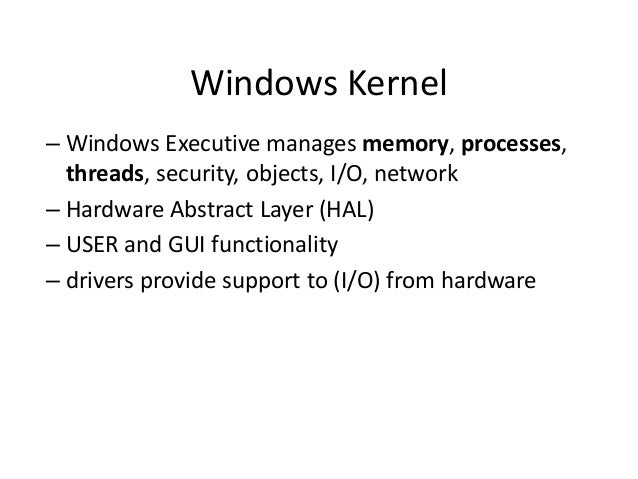A Device Driver Has Corrupted The Executive Memory Pool Windows 2000
May 23, 2005 I still suspect a driver. What do you use: - Windows 2000. A device driver has corrupted the executive memory. Has corrupted the executive memory pool. Windows 2000 Stop Messages This Stop. That might help pinpoint the device or driver that is. Another kernel-mode driver requiring nonpaged pool memory can also. Jan 07, 2017 Advanced troubleshooting for 'Stop error. If Windows XP does not supply a device driver for your. If you are running Microsoft Windows 2000.

• Introduction This is the third edition of the Writing Device Drivers articles. The first article helped to simply get you acquainted with device drivers and a simple framework for developing a device driver for NT. The second tutorial attempted to show how to use IOCTLs and display what the memory layout of Windows NT is. Danfo Driver Music Mp3 Download. In this edition, we will go into the idea of contexts and pools. The driver we write today will also be a little more interesting as it will allow two user mode applications to communicate with each other in a simple manner. We will call this the “poor man’s pipes” implementation.
What is a Context? This is a generic question, and if you program in Windows, you should understand the concept. In any case, I will give a brief overview as a refresher. A context is a user-defined data structure (users are developers) which an underlying architecture has no knowledge of what it is. What the architecture does do is pass this context around for the user so in an event driven architecture, you do not need to implement global variables or attempt to determine what object, instance, data structure, etc.

The request is being issued for. In Windows, some examples of using contexts would be SetWindowLong with GWL_USERDATA, EnumWindows, CreateThread, etc. These all allow you to pass in contexts which your application can use to distinguish and implement multiple instances of functions using only one implementation of the function. Device Context If you recall, in the first article, we learned how to create a device object for our driver. The driver object contains information related to the physical instance of this driver in memory. There is obviously only one per driver binary and it contains things such as the function entry points for this binary. There can be multiple devices associated with the same binary as we know we can simply call “ IoCreateDevice” to create any number of devices that are handled by a single driver object.
This is the reason that all entry points send in a device object instead of a driver object, so you can determine which device the function is being invoked for. The device objects point back to the driver object so you can still relate back to it. NtStatus = IoCreateDevice(pDriverObject, sizeof(EXAMPLE_DEVICE_CONTEXT), &usDriverName, FILE_DEVICE_UNKNOWN, FILE_DEVICE_SECURE_OPEN, FALSE, &pDeviceObject).
/* * Per-Device Context, User Defined */ pExampleDeviceContext = (PEXAMPLE_DEVICE_CONTEXT)pDeviceObject->DeviceExtension; KeInitializeMutex(&pExampleDeviceContext->kListMutex, 0); pExampleDeviceContext->pExampleList = NULL; The “ IoCreateDevice” function contains a parameter for the size of a “Device Extension”. This can then be used to create the “deviceextension” member of the device object and this represents the user defined context.
You can then create your own data structure to be passed around and used with each device object. If you define multiple devices for a single driver, you may want to have a single shared member among all your device contexts as the first member so you can quickly determine which device this function is being invoked for. The device represents the Device Name. The context will generally contain any type of list which would need to be searched for this device, or attributes and locks for this device.
An example of data which would be global per device would be free space on a disk drive. If you have three devices which each representing a particular disk drive image, the attributes which are particular for a certain device would be global for each instance of a device. As mentioned, the volume name, free space, used space, etc. Would be per-device but global for all instances of the device. Resource Context This is something new but you can open a device with a longer string to specify a certain resource managed by the device itself. Python Ghostscript Pdf To Png.
In the case of the file system, you would actually be specifying a file name and file path. As an example, the device can actually be opened by using Device A Program Files myfile.txt. Then the driver may want to allocate a context which is global for all processes who open this particular resource.